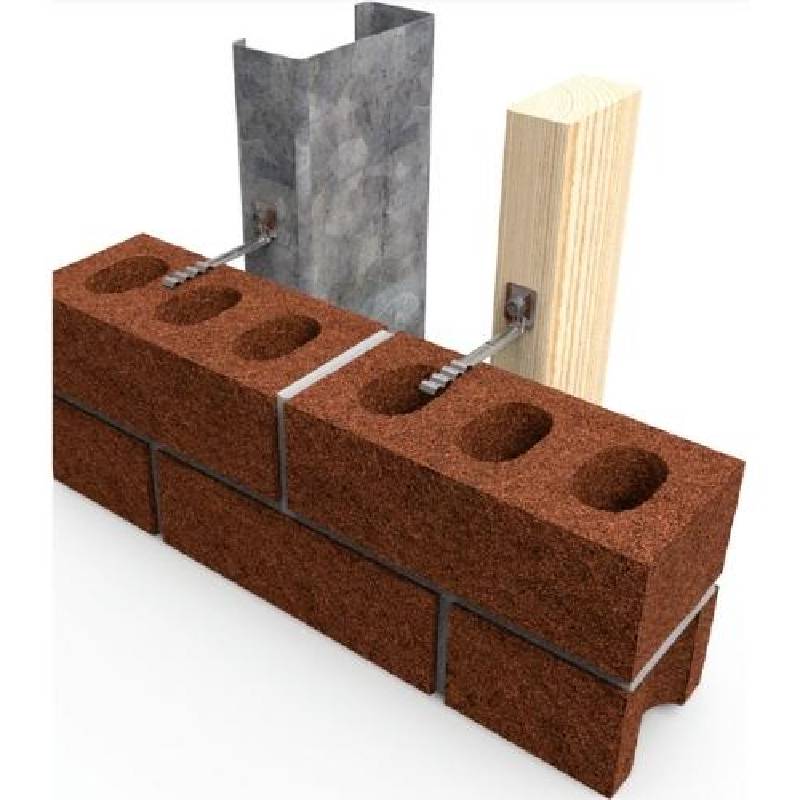
- Mobile Phone
- +8613931874955
- sales@cntcmetal.com
Exploring Innovative Uses for Wire Wall Ties in Construction and Design
Understanding Wire Wall Ties Their Importance and Implementation in Construction
Wire wall ties, commonly known as masonry wall ties, play a critical role in the structural integrity of buildings, particularly those constructed with brick or block. These ties are essential components that help to secure the outer skin of a cavity wall to the inner leaf, thereby ensuring stability and resilience against various external forces. In this article, we will explore the purpose, design, applications, and benefits of wire wall ties in construction.
Purpose of Wire Wall Ties
The primary function of wire wall ties is to connect two wythes of masonry, usually an outer layer of brick or stone and an inner layer of block or concrete. This connection is vital for several reasons
1. Structural Stability Wall ties provide lateral support to the outer leaf, helping to resist wind loads and other environmental forces. They prevent the outer layer from moving or bowing away from the inner layer, maintaining the overall vertical alignment of the wall.
2. Moisture Control Cavity walls are designed to prevent moisture from penetrating the inner wall. Wall ties help facilitate air circulation within the cavity, allowing trapped moisture to evaporate and reducing the risk of mold and decay that can compromise structural integrity.
3. Thermal Performance Wire wall ties contribute to the thermal performance of a building. By creating an air gap, they help in the insulation process, minimizing heat transfer and enhancing energy efficiency.
Design and Material
Wire wall ties are typically made from high-strength steel, which offers durability and resistance to corrosion. The design of these ties may vary based on specific requirements and building codes, but they generally feature a straight or crimped configuration that allows for effective anchoring in the masonry.
Several aspects must be considered when selecting wire wall ties
1. Spacing The spacing between the ties should adhere to local building codes and guidelines. Common practices recommend placing ties every 16 to 24 inches vertically, depending on the wall height and the type of masonry used.
wire wall ties

2. Type of Tie Various types of ties exist, such as horizontal ties, vertical ties, and adjustable ties, each serving different structural needs. The choice of tie can affect both the wall's strength and its resistance to moisture.
3. Corrosion Resistance In environments prone to moisture, it is imperative to choose ties that have appropriate coatings or are made of materials resistant to corrosion to ensure longevity.
Applications of Wire Wall Ties
Wire wall ties are widely used in various types of constructions, including residential, commercial, and industrial buildings. Here are some common applications
1. Cavity Walls As previously mentioned, wire wall ties are fundamental in cavity wall systems, which are designed to provide effective moisture management and thermal insulation.
2. Brick Veneers In buildings with brick veneer facades, wall ties secure the brick to the structural framework, ensuring stability and aesthetics.
3. Retaining Walls Wire wall ties can also be employed in retaining wall systems to stabilize the facing materials against soil pressure and other forces.
Benefits of Implementing Wire Wall Ties
The advantages of using wire wall ties in construction are numerous. They enhance structural integrity, improve moisture resistance, and offer energy efficiency, resulting in reduced heating and cooling costs. Furthermore, the use of wall ties can lead to lower maintenance needs over time, as properly designed and installed ties help prolong the lifespan of the wall components.
Conclusion
In summary, wire wall ties are crucial elements in modern masonry construction. They facilitate stability, enhance moisture management, and contribute to thermal efficiency. Choosing the right type and spacing of wall ties during the construction process is essential for ensuring a robust and durable wall system. As building codes evolve and construction technologies advance, the role of wire wall ties will undoubtedly remain a pivotal consideration for architects, engineers, and builders alike. By emphasizing the importance of these ties, we can ensure the longevity and safety of our structures for generations to come.
share:
-
Your Source for Concrete Wall Ties and Masonry AccessoriesNewsJul.10,2025
-
Unlocking the Power of Iron Wire for Every ProjectNewsJul.10,2025
-
Explore Advanced Chain Wire and Stainless Steel Mesh FencingNewsJul.10,2025
-
Discover the Benefits of Annealed Wire ProductsNewsJul.10,2025
-
Discover China Stainless Steel Wire Mesh SolutionsNewsJul.10,2025
-
Build with Confidence Using High-Performance Masonry AccessoriesNewsJul.10,2025
-
Why Sacrificial Formwork Is Redefining Underground ConstructionNewsJun.06,2025



















